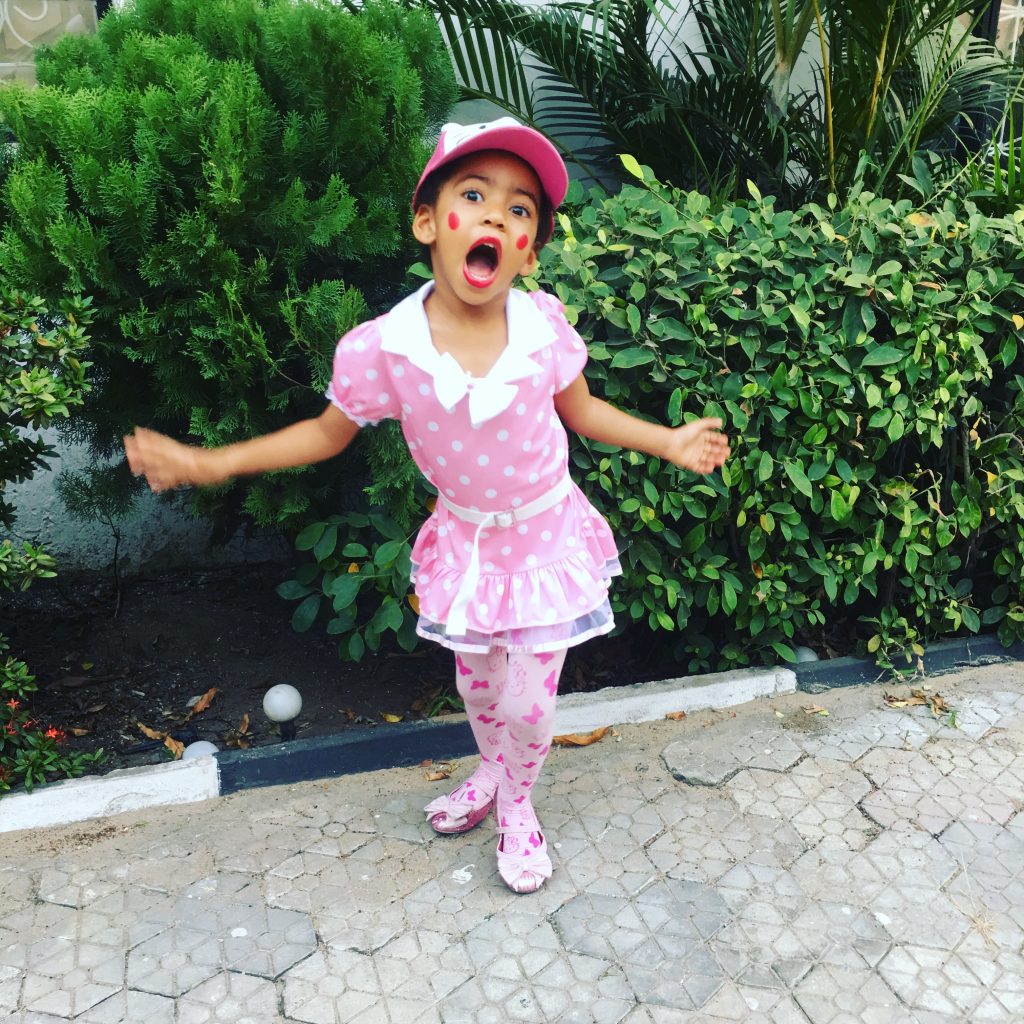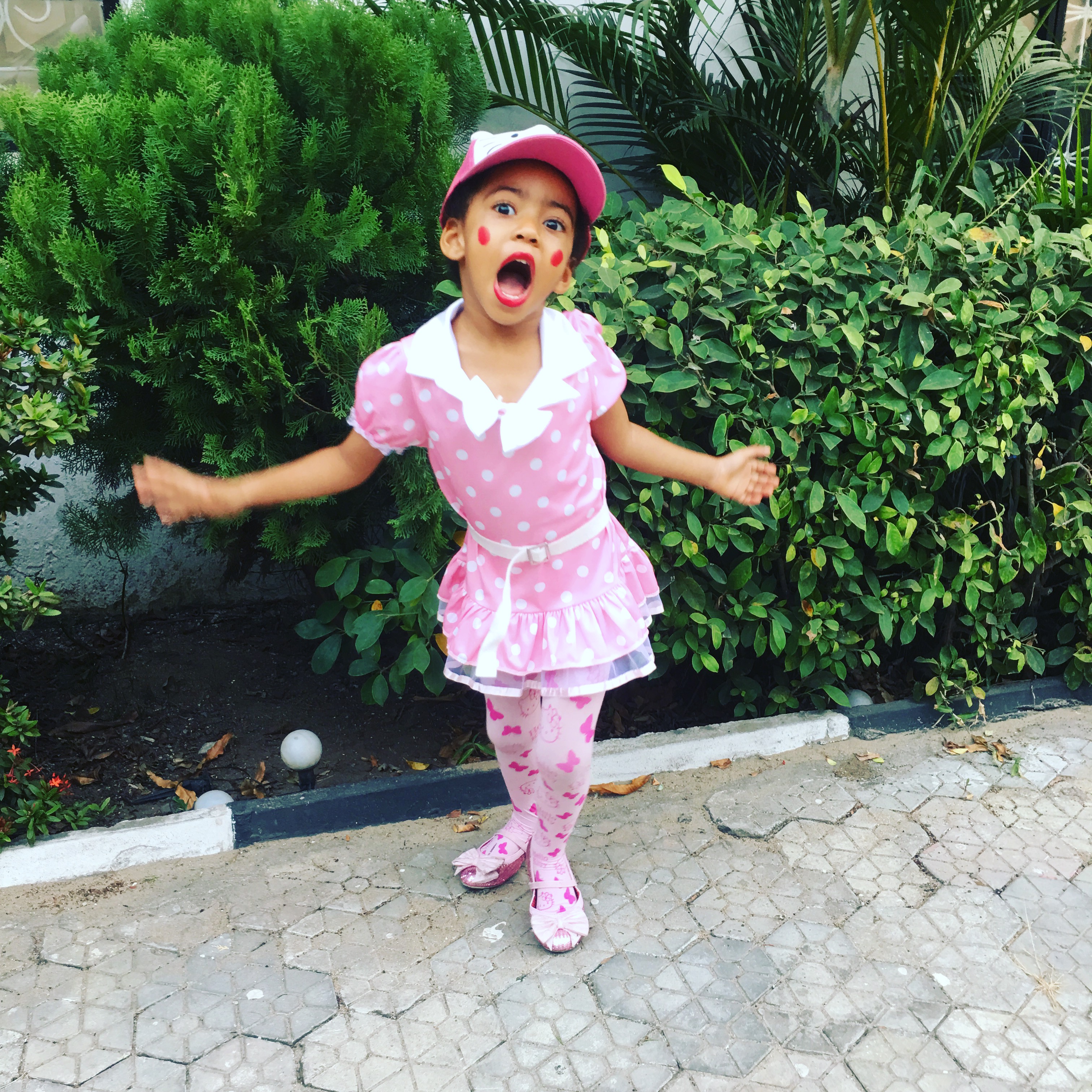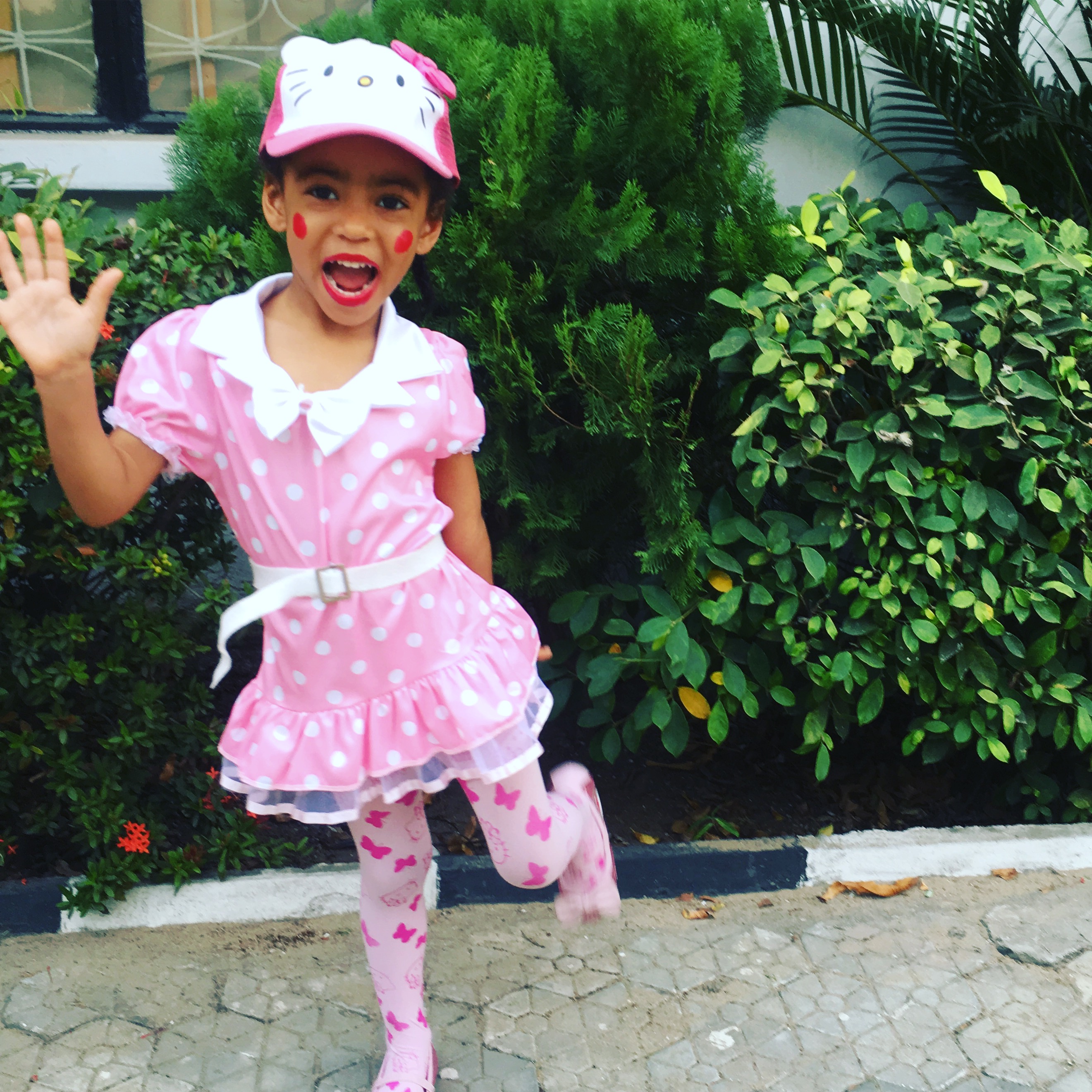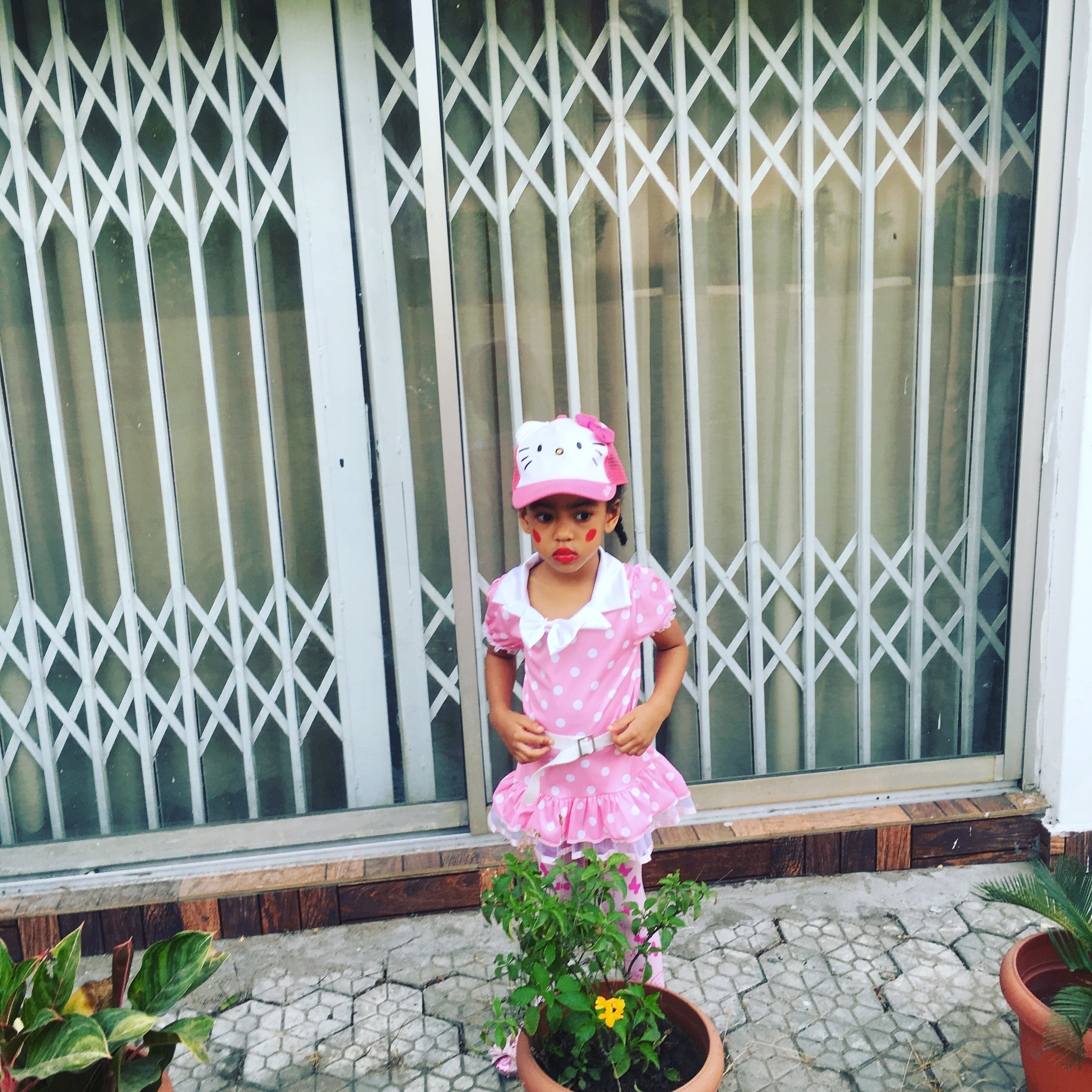
Underneath the hat feathers and superhero costumes, dress-up play is serious business, teaching your kids skills they’ll use for years to come.
At age two and a half, my daughter, Hannah, was replaced by an alligator
Day in, day out, I’d find myself looking down into the sinister white-felt eyes topping the green plush costume she’d first worn for Halloween. When the suit got too dirty, getting it off her was like an episode of Man vs. Wild. “I need Alligator!” she’d beg, and I’d again fish it out of the hamper.
This wouldn’t be the last puzzling transformation I’d witness around the dress-up box. At age 3, my son, Ethan, spent two weeks donning a wig and heels to preside over his/her kingdom as “Princess Rose.” Meanwhile, friends involved in furious eBay hunts for the perfect knight costume—size 4—were pausing to ask me, presumably the older, wiser mom, their questions about kids’ fascination with dressing up. Consulting experts and an alligator-high book stack, I found some answers.
My 2-year-old is obsessed with her “magic slippers”—but not any other part of the costume they came with. What is this about?
When it comes to dress-up, shoes are often a child’s first love. (Pioneering child psychologist Louise Bates Ames called them the “very favorite object.”) It’s not hard to understand the allure for little Carrie Bradshaws: Shoes show that kids are now grown-up, and going places. They’re easy-on, easy-off, yet sport intriguing mysteries such as buckles and laces. And they’re potent symbols of Mom and Dad, favorite subjects of early play. For all these reasons, the iconic shot of a toddler teetering precariously in Mom’s high heels is legally required for every baby album
My 3-year-old decks out in so much froufrou that it looks like she’s headlining a cabaret. Is this a predictor of her—gulp!—grown-up style?
Jeans-clad, flip-flops—wearing mothers may well wonder how they could have produced a little Dolly Parton. But according to Ann Barbour, Ph.D., a professor of early childhood education at California State University, Los Angeles and a former preschool teacher, this taste for ball gowns, tutus and crinoline is a normal development as little girls start working out for themselves what it means to be female. “At first, they base that understanding on outward characteristics, and sometimes they go to extremes,” she says
Take heart: Many girls pass through these common experiments without a lasting penchant for glitter. My own pom-pom—wielding preschooler has morphed into a 13-year-old volleyball spiker who insists her T-shirts and sweatpants be in no way “bind-y
Come to think of it, should I worry if my son likes to dress up like a cheerleader?
Not unless he’s rooting for the enemy team. “This is a very common behavior,” says Jack Maypole, M.D., a pediatrician at Boston Medical Center, and again, it’s a step in kids’ figuring out gender identities: Before about age 4, children may be able to identify a picture of a person as either male or female, but they may think that if the subject changes clothing or hairstyle, he or she changes sex as well. Dress-up helps kids test out theories and arrive at the more mature understanding that clothes don’t make the man (or woman
What are my kids getting out of this kind of play?
Literally walking in other people’s shoes may give kids valuable experience in, um, walking in other people’s shoes. In fact, studies have linked role-play to empathy: Kids who engaged in it were more skilled in judging how other people might feel than those who didn’t
A rousing game of “zookeeper” also turns out to be great preparation for the life skills kids will soon need. Not only do they get plenty of unhurried practice with buttoning, zipping and otherwise arranging clothing, they also strengthen their language and social skills, from negotiation and storytelling (“Let’s pretend…”) to problem solving (“How would you catch a runaway lion?”). And, says Barbour, “When kids substitute a wooden block for a phone, they are thinking symbolically. That’s a precursor to all later academic experiences, like reading, writing and math.
My son hasn’t shown any interest in dress-up. Could this be a Y-chromosome thing
The research gives no reason to think so, says former Yale senior research scientist Dorothy Singer, Ph.D., who coauthored the classic The House of Make-Believe. What is true, she says, is that some preschools (or parents) might consider dress-up to be chiefly girls’ domain and stock up accordingly on aprons or feather boas, inadvertently defining who gravitates there. But given the right props—Singer is a fan of hats—many boys love this kind of play, too.
For Kari Hicks’s 4-year-old son, Mason, all it took was viewing an Elmo DVD in which his hero dressed up as a fireman. “We offered to get him the costume, and he got so excited,” says the Buffalo, NY, mom. “His favorite now is a policeman uniform. He saunters out of his room, acting all cool and trying to ‘arrest’ me. It’s hilarious!”
My 5-year-old loves to play superhero, but his best friend’s mom won’t let her kid join in. Why not?
perennial favorite of boys in particular, superhero play is a way for young children to feel powerful for a change. Adults, however, can be more ambivalent, fearing its set story lines, rigid gender roles and rough-and-tumble nature. “It’s hard to run group time when a couple of Spider-Men are shooting webs at each other!” says Eric Hoffman, author of Magic Capes, Amazing Powers: Transforming Superhero Play in the Classroom.
Kids who role-play are more skilled at judging how others might feel than those whose don’t’
But don’t hang up the masks just yet. This type of play can encourage lots of healthy physical activity (running, wrestling, leaping tall buildings in a single bound), teamwork, and hands-on exploration of big issues such as fairness and right and wrong. “In particular, kids can learn to balance their desire for power and control with their need for relationships,” says Hoffman. “Lots of adults have trouble with that!”
To ensure your caped crusaders use their powers for good, not evil, try setting boundaries: Limit the action to the outdoors, for example, and decree that everyone (i.e., girls) be allowed to play. Hoffman also suggests providing alternatives to alluring (but violent) props such as toy guns. “Gold or silver wands, ‘magic’ bracelets, or hats can become power objects, with help,” he says.
At what age do kids grow out of dress-up?
Around first grade, pretending often becomes “miniaturized”—acted out more through dollhouses and action figures, with dress-up duds less frequently in circulation. But think of Halloween, and it’s clear that the urge to play dress-up never really leaves us. Adults, too, are desperate for a chance to don a new identity—if only for a single, mysterious night.








